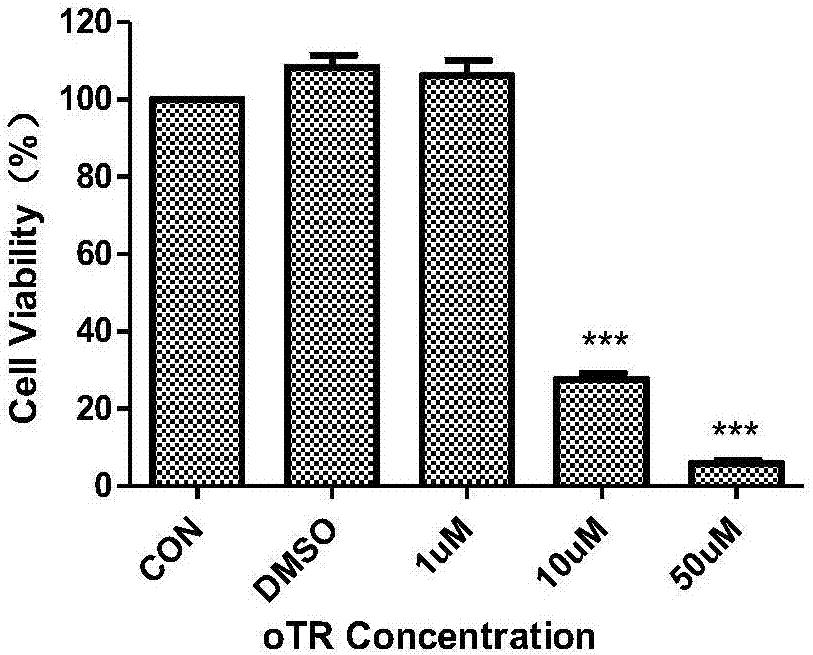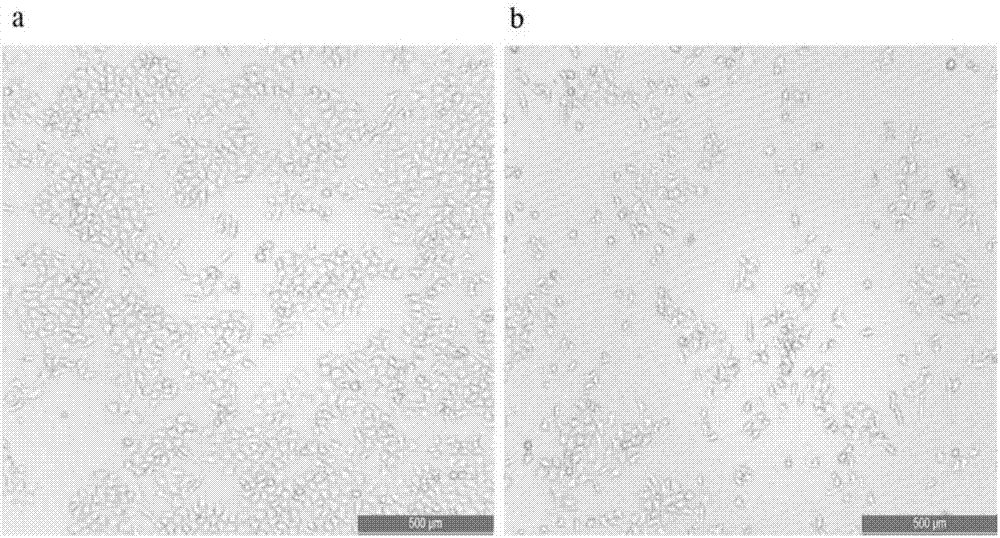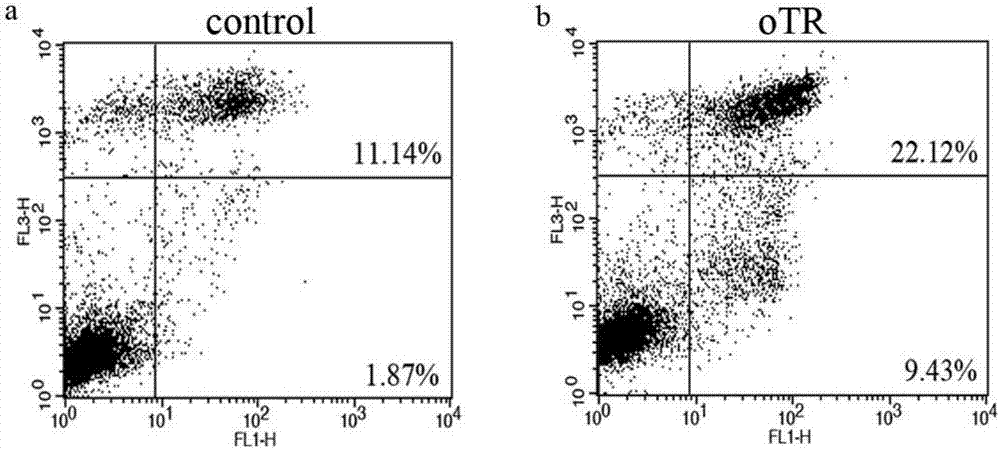Application of apoptosis-inducing reagent in human breast cancer cell
A technology of human breast cancer cells and cells, applied in the fields of biochemistry and molecular biology, to achieve the effect of significant in vitro proliferation inhibitory activity
- Summary
- Abstract
- Description
- Claims
- Application Information
AI Technical Summary
Problems solved by technology
Method used
Image
Examples
Embodiment 1
[0021] In vitro proliferation inhibitory activity of oTR on human breast cancer cells: the revived human breast cancer cells MCF-7 were cultured in a medium containing 10% FBS inactivated fetal bovine serum, 1% glutamine, 1% penicillin / 1% streptomycin ( Double antibody) sterile RPMI 1640 culture medium, placed in a cell culture flask, at 37 ° C, 5% CO 2 and cultured in an incubator under saturated humidity, and the cells grow to about 70% to 80%, and are passaged once. Continue culturing to obtain human breast cancer cells in an active growth state, and collect the cells. 5×10 that will be in logarithmic growth phase 3 Each cell was seeded in a 96-well plate containing 100 μl RPMI 1640 culture medium in each well. According to the experimental requirements, the treatment group was added with 0.1% DMSO, 0.3 μM, 1.5 μM, 15 μM, and 30 μM concentrations of oTR, and incubated in an incubator for 1 ~ 4 days, each with 4 replicate wells. Use the MTT kit for detection, add 20 μl MT...
Embodiment 2
[0023] oTR induces apoptosis of MCF-7 cells: After the actively growing MCF-7 cells were treated with 10 μM oTR for 48 hours, the staining buffer was prepared according to the instructions of the Annexin V-FITC apoptosis detection kit, and 500 μl of staining buffer was added to each sample Incubate at 37°C in the dark for 30 min, and finally wash once with PBS. After filtering with a 300-mesh sieve, it was detected with a BD FACSCalibur flow cytometer, and the apoptosis rate was calculated. The result is as image 3 as shown, image 3It can be seen that there are early and late apoptotic cell populations. Compared with the control group (1.87%), the early apoptosis of MCF-7 cells in the oTR treatment group (9.43%) was significantly increased ( image 3 ), and the late apoptosis control group (11.14%) was also less than the oTR treatment group (22.12%), indicating that under the same experimental conditions, oTR can induce apoptosis of MCF-7 cells.
PUM
 Login to View More
Login to View More Abstract
Description
Claims
Application Information
 Login to View More
Login to View More - R&D Engineer
- R&D Manager
- IP Professional
- Industry Leading Data Capabilities
- Powerful AI technology
- Patent DNA Extraction
Browse by: Latest US Patents, China's latest patents, Technical Efficacy Thesaurus, Application Domain, Technology Topic, Popular Technical Reports.
© 2024 PatSnap. All rights reserved.Legal|Privacy policy|Modern Slavery Act Transparency Statement|Sitemap|About US| Contact US: help@patsnap.com










